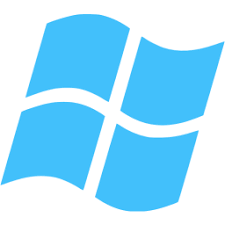Giới Thiệu · Learn All PRO Machine Learning Tutorials Offline
ADS FREE | NO ADS
Artificial intelligence is the intelligence demonstrated by machines, in contrast to the intelligence displayed by humansby the 2020 .This tutorial covers the basic concepts of various fields of artificial intelligence like Artificial Neural Networks, Natural Language Processing, Machine Learning, Deep Learning, Genetic algorithms etc., and its implementation in Python.
In this tutorial, we will learn how to use a deep learning framework named Caffe2 (Convolutional Architecture for Fast Feature Embedding). Moreover in 2020 , we will understand the difference between traditional machine learning and deep learning, what are the new features in Caffe2 as compared to Caffe and the installation instructions for Caffe2.
H2O is an open source Machine Learning framework with full-tested implementations of several widely-accepted ML algorithms. In 2020 you just have to pick up the algorithm from its huge repository and apply it to your dataset. It contains the most widely used statistical and ML algorithms.H2O provides an easy-to-use open source platform for applying different ML algorithms on a given dataset.
Python is a general-purpose high level programming language that is widely used in data science and for producing deep learning algorithms.This brief tutorial introduces Python and its libraries like Numpy, Scipy, Pandas, Matplotlib; frameworks like Theano, TensorFlow, Keras.
Keras is an open source deep learning framework for python. It has been developed by an artificial intelligence researcher at Google named Francois Chollet. Leading organizations like Google, Square, Netflix, Huawei and Uber are currently using Keras. This tutorial walks through the installation of Keras, basics of deep learning, Keras models, Keras layers, Keras modules and finally conclude with some real-time applications in 2020 .
KNIME provides a graphical interface for development. The introduction of KNIME has brought the development of Machine Learning models in the purview of a common man.
Logistic Regression is a statistical method of classification of objects. In this tutorial, we will focus on solving binary classification problem using logistic regression technique.
Todays Artificial Intelligence (AI) has far surpassed the hype of blockchain and quantum computing. The developers now take advantage of this in creating new Machine Learning models and to re-train the existing models for better performance and results.
Pybrain is an open-source library for Machine learning implemented using python. The library offers you some easy to use training algorithms for networks, datasets, trainers to train and test the network.
TensorFlow is an open source machine learning framework for all developers. It is used for implementing machine learning and deep learning applications. To develop and research on fascinating ideas on artificial intelligence, Google team created TensorFlow. TensorFlow is designed in Python programming language.
Theano is a Python library that lets you define mathematical expressions used in Machine Learning, optimize these expressions and evaluate those very efficiently by decisively using GPUs in critical areas.
A time series is a sequence of observations over a certain period. The simplest example of a time series that all of us come across on a day to day basis is the change in temperature throughout the day or week or month or year.The analysis of temporal data is capable of giving us useful insights on how a variable changes over time.
Machine Learning (ML) is basically that field of computer science with the help of which computer systems can provide sense to data in much the same way as human beings do. In simple words, ML is a type of artificial intelligence that extract patterns out of raw data by using an algorithm or method. The key focus of ML is to allow computer systems to learn from experience without being explicitly programmed or human intervention.












